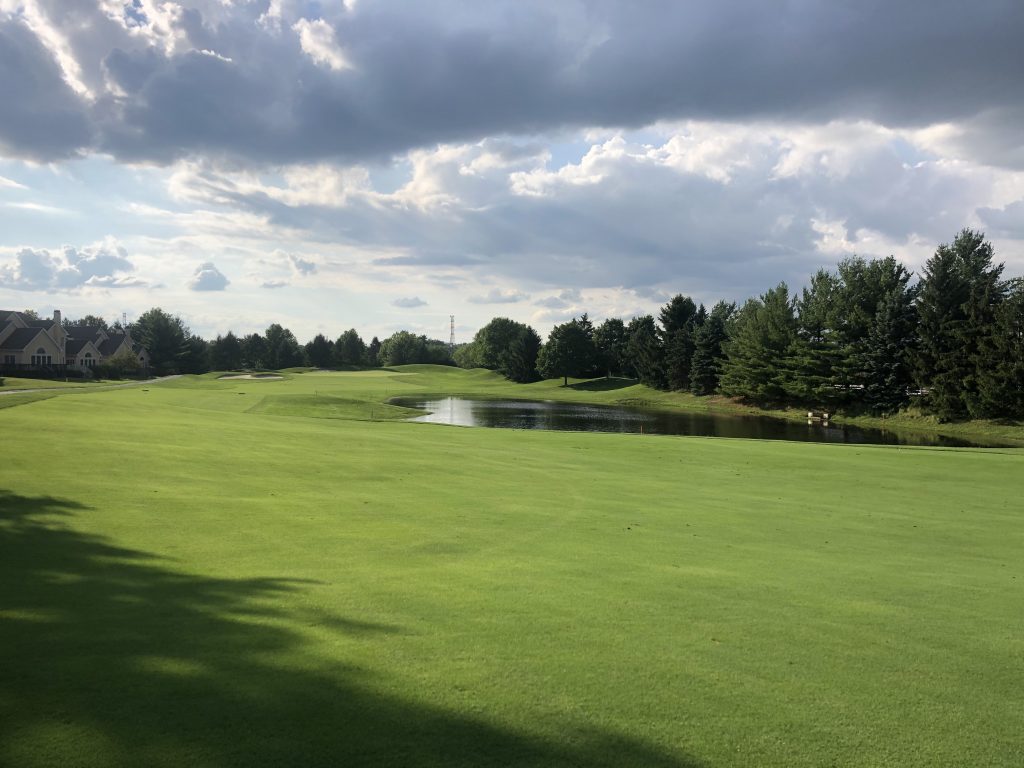Soil Moisture Monitoring: Data Modeling with Spiio Sensors
Superintendent Curtis Harder discusses the ways that soil moisture monitoring with Spiio sensors has benefitted Blue Bell Country Club. With constant app updates and incredible ease of use and install, he sees these sensors as “invaluable.”
Curtis Harder has spent eighteen years in the turfgrass industry. Graduating from Delaware Valley University in 2009, he helped host the U.S. Women’s Open at Saucon Valley Country Club. He then moved to New Jersey’s Hollywood Golf Club and, later, Philadelphia Cricket Club, where he first became a superintendent. He is now going into his fifth season at Blue Bell Country Club.

Blue Bell Country Club opened in 1994 and boasts close to 700 acres of diverse topography. Its beautiful landscape and social environment attract a healthy membership with a wide variety of golfers. In the last twelve months of the pandemic, they’ve seen a welcomed increase in membership. Golf has proven to be a great outlet during the pandemic, making it even more important to keep courses healthy. Thankfully, Curtis Harder installed four Spiios on the course in 2019. Spiio sensors help superintendents care for their turf through temperature, salinity, and soil moisture monitoring.
Soil Moisture Monitoring with Spiio: Supplementing Traditional Readers
Of course, Harder and the staff at Blue Bell were diligent in soil moisture monitoring before Spiio, he says:
We still go out every day with TDR moisture readers, but Spiio tracks the data. If we get rainfall and we can see as the moisture percentage goes up and then goes back down. We can start to build a model and know what we need to do after rain. It helps us be a little more precise on the labor side. In the spring and summer when we’re busy with projects, we can take a quick look at the Spiio. We might say, ‘Okay, we’re good. We don’t have to worry about the greens right now.
In addition to soil moisture monitoring, Harder has found Spiio’s temperature data very helpful. “I really enjoy looking at the data,” says Harder. For example, he notes that when he makes an application for insects, he can see what’s working and what’s not. “I like seeing whether we need to apply a little sooner or later next time. For example, right now we’re probably close to two weeks ahead of where we were last year.” In the winter, he can see how the ground temperature fluctuates and determine whether snow removal is needed. Being able to track data around the clock presents new possibilities for making comparisons and decisions like these.
I like seeing whether we need to apply a little sooner or later next time. For example, right now we’re probably close to two weeks ahead of where we were last year.
Curtis Harder

A Low-Risk Investment: Spiio Sensors’ Ease of Use and Install and App Updates
One of the biggest factors for Harder in making the decision to start soil moisture monitoring with Spiios was its ease of use and install. “Other companies offer something similar, but Spiio is on the forefront. Installation is easy, there are no wires to dig up—for just a couple hundred dollars, I think it’s invaluable.” And it’s not just installation; constant app updates keep Spiio data easy to access and use as well. “There have definitely been some good upgrades since we started out. It’s gotten easier and less quirky to use. Overall, it’s very user-friendly, and there are elements, like notifications, that I want to explore some more. It’s good to see that they’re always tweaking things.”
Other companies offer something similar, but Spiio is on the forefront. Installation is easy, there are no wires to dig up—for just a couple hundred dollars, I think it’s invaluable.
Curtis Harder

Another Point of Reference: Making More Informed Decisions
The biggest value Harder sees, though, is still in the soil moisture monitoring. He’s known, for example, that some of his greens are a touch drier than others. So, he spread out his sensors to get data across these localized areas where wind and sun create different microclimates. He’s actually in the process of installing three more Spiios:
I’m interested to see where we’ll put them—maybe one in the fairways to compare to the greens. It helps to see whether to run overhead irrigation or just water in a few areas. And we can look at the data from 5am and make those decisions in the office before we even go out for the day.
All in all, Harder appreciates having another point of reference in making decisions. “Whether we should send mowers out, what type of sprays we should do…it’s another measure to make more informed decisions.” He recognizes that not having to just rely on feeling for these decisions is particularly helpful for new assistants. He’s quick to acknowledge that he’s got a great staff. Spiio is a tool to help communicate with them as they make these decisions:
Some of them like to see what we’re seeing, to understand why we make the decisions we do. I take a screenshot for our green committee meeting to show the raw data and explain what we’re doing.
Spiio’s soil moisture monitoring, in addition to its other readings, offers superintendents like Harder valuable decision-guiding data. With unparalleled ease of use and install, plus the promise of constant improvement through app updates, it’s an easy decision.

